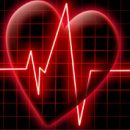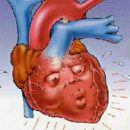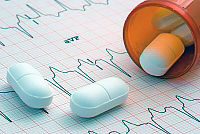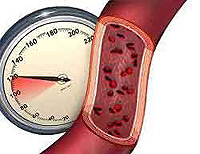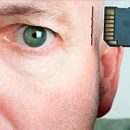How is the ischemic heart disease manifest? Consider the existing forms of ischemic heart disease and their manifestations.
Content
IBS forms still represents not to the end of a solid problem in cardiology. The fact is that ischemic disease is distinguished by a huge variety of clinical manifestations, which depend on the mechanisms of its occurrence. Representations of cardiologists about the mechanisms of development of the IBS are rapidly changed as scientific knowledge of the nature of this disease expands. In addition, the construction of the CRS classification complicates the fact that different forms of ischemia can be combined with each other or quickly and almost unpredictably move one to another.
Currently, the classical Classification of IBS, adopted by WHO (World Health Organization) in 1979. According to this classification, the main forms of the IBS are:
- Sudden heart death.
- Angina.
- Myocardial Cheese Ischemia.
- Myocardial infarction.
- Post-infarction cardiosclerosis and its manifestations: arrhythmias and heart failure.
Sudden heart death
 Sudden heart death (primary heart stop, coronary death) – This is the most severe, lightning clinical option of the CHA, which consists in a sudden stopping of the heart of the patient. It is IBS that causes 85-90% of all cases of sudden death. Only those cases of sudden cessation of cardiac activity include sudden cardiac death, when death comes with witnesses within an hour after the appearance of the first threatening symptoms. At the same time, before the death of death, the patient's condition was estimated as stable and no concern. Finally, other causes of death should be excluded: for example, injuries.
Sudden heart death (primary heart stop, coronary death) – This is the most severe, lightning clinical option of the CHA, which consists in a sudden stopping of the heart of the patient. It is IBS that causes 85-90% of all cases of sudden death. Only those cases of sudden cessation of cardiac activity include sudden cardiac death, when death comes with witnesses within an hour after the appearance of the first threatening symptoms. At the same time, before the death of death, the patient's condition was estimated as stable and no concern. Finally, other causes of death should be excluded: for example, injuries.
Especially high the risk of sudden heartfall in patients with acute myocardial infarction (especially in the first hour of infarction development); In patients with stagnant heart failure, in patients with ventricular arrhythmias, and, finally, in patients with IHS with such risk factors, like smoking, increased pressure, impaired carbohydrate and fat exchanges. Sudden heart death can be provoked by excessive physical or neuropsychiatric tension, but may arise alone, for example, in a dream. Immediately before the onset of sudden cardiac death, approximately half of the patients marked pain attack, which is often accompanied by fear of close death. Most often, sudden heart death occurs in community-friendly conditions, which determines the most frequent fatal outcome of this form of the IBS. In the event of a sudden cardiac death, it is necessary to immediately carry out cardiovascular resuscitation, which includes the restoration of the airways, artificial ventilation of the lungs, indirect heart massage, and drug therapy.
Angina (breast toad) – This is the most common form of IBS. Angina is an attacks of suddenly appearing and usually quickly disappearing pain in the chest. The duration of the attack of angina ranges from a few seconds to 10-15 minutes. The pain often occurs during physical stress, for example, when walking. This is the so-called angina stress. Less often it occurs with mental work, after emotional overloads, when cooled, after abundant food and T.D. Depending on the stage of the disease, the stress angina disease is divided by first angina, stable angina (with an indication of the functional class from I to IV), progressing angina. With the further development of the CHA, the stroke angina is complemented by resting the rest, in which pain attacks occur not only at the voltage, but also at rest, sometimes at night.
Myocardine ischemia ischemia is the most unpleasant and dangerous variety of IBS, since, in contrast to the attacks of angina, the episodes of nonsense ischemia are inconspicuous for the patient. Therefore, 70% of cases of sudden cardiac death occur in patients with solemary ischemia myocardium. In addition, cheerful ischemia increases the risk of arrhythmias and stagnant heart failure. Research from a patient, hearty ischemia can only with a cardiologist with such research methods as long-term Halter monitoring, functional load tests, echocardiography. In case of timely examination and the correct diagnosis of the myocardial, solemn ischemia is successfully treated.
Myocardial infarction – The formidable disease in which a progress of the progress of angina. This form of IHD is due to the acute insufficiency of the blood supply to myocardium, because of which the focus of necrosis arises, that is, the leaning fabric. The main reason for the development of myocardial infarction – This is a complete or almost complete blockage of the arteries of a thrombus or a swirl atherosclerotic bottle. With the complete blockage of the artery, the thrombus occurs the so-called largest (transmural) myocardial infarction. The name is explained by the fact that with this type of heart attack in the heart muscle there is one major focus of necrosis. If the blockage of the artery is partial, then a few smaller deaths are developing in myocardium, then they talk about small-scale myocardial infarction. Of course, such a heavy form of IBS, as a myocardial infarction, is useless and even dangerous to try to treat homemade products, therefore, with a dragging and not stopping nitroglycerin attack of angina, it is necessary to immediately cause a patient «ambulance».
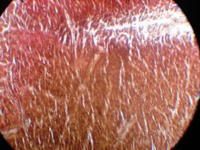 Post-infarction cardiosclerosis arises as a direct consequence of the myocardial infarction. Post-infarction cardiosclerosis – This is the defeat of the heart muscle, and often the heart valves, as a result of the development of scar tissue in the form of areas of various sizes and prevalences that replace myocardium. Post-infarction cardiosclerosis develops because deadly sections of the heart muscle are not restored, but replaced with a scar cloth. However, post-infarction state – Not the only possible cause of cardiosclerosis, but the remaining causes (among them the injuries of the heart, myocardial dystrophy and T.D.) meet less often.
Post-infarction cardiosclerosis arises as a direct consequence of the myocardial infarction. Post-infarction cardiosclerosis – This is the defeat of the heart muscle, and often the heart valves, as a result of the development of scar tissue in the form of areas of various sizes and prevalences that replace myocardium. Post-infarction cardiosclerosis develops because deadly sections of the heart muscle are not restored, but replaced with a scar cloth. However, post-infarction state – Not the only possible cause of cardiosclerosis, but the remaining causes (among them the injuries of the heart, myocardial dystrophy and T.D.) meet less often.
Manifestations of cardiosclerosis are often becoming such states as heart failure and various arrhythmias. Heart failure – This is a set of conditions in which the reduction capacity of the heart muscle (myocardium) and the heart loses the ability to provide the body with the necessary amount of blood. The inevitable result of heart failure becomes the appearance of various deviations in the blood circulation in the body, which are either perfected by the patients themselves, or are determined during the examination with a cardiologist.
As for arrhythmia, this term is customary to call various in nature, origin and value of deviation in the rhythm of heart abbreviations. The types of arrhythmias are many, sometimes they arise in connection with diseases not cardiovascular, but the nervous system, in endocrine diseases. But nevertheless the most common cause of arrhythmia – Defeat of various departments of the heart.

